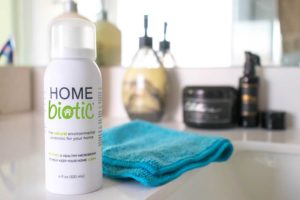3 Healthy Home Hacks

We’re lucky enough to be living in a time of great technological and biological advancement. We get to sleep in soft beds, enjoy indoor plumbing, and our houses are cool in the summer and warm them in the winter. In fact, as you’re reading this article you’re probably inside your home or office. We spend an average of 90% of our time indoors. This means that healthy home hacks are a very efficient way to improve your own health and well being. So, how do you keep your house clean?
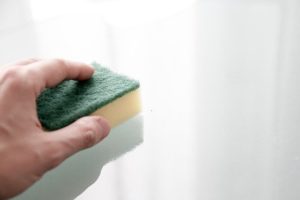 What does “clean” mean?
What does “clean” mean?
If it looks clean and smells clean, is it clean? The answer to that is a resounding… “maybe”.
You’ll see lots of tips that share ways to keep your house dust-free or your carpets smelling fresh. Just because you can’t see it or smell it doesn’t mean it’s not there. For example, dust mites are there whether you can see them or not, and dust mite allergies are becoming common. It’s hard to know exactly what is in “dust”. For example, skin flakes make up about 80% of the material you see in a sunbeam. You’ll never look at sunshine streaming through your windows the same way again. So, let’s agree that there will always be microbes, bacteria, dirt and more in our homes, no matter how much you vacuum or how enthusiastically you scrub.
skin flakes make up about 80% of the material you see in a sunbeam. You’ll never look at sunshine streaming through your windows the same way again Share on XThe next reaction may be to simply bleach everything so at least it’s all dead!
But, there are a few problems with this idea:
- Not everything can be bleached, such as that beautiful wool rug in the living room.
- Bleach doesn’t discriminate against what it kills, so it’s killing the good bacteria and fungi along with the bad, leaving you with an invisible wasteland. As the bleach evaporates, it contaminates the air and it leaves behind water.
- The water left behind by the bleach is the perfect environment for mold, mildew and bad bacteria to grow in the post-bleach wasteland. Now you have opened the door to toxic mildew and mold that not only smells bad, but also lowers the quality of your air and triggers allergies in sensitive people.
- Finally, if you kill off “most” of the good and the bad microorganisms, you’re killing off the weak and allowing the strong, pathogenic (bad!) ones to survive.
 Think about it like landscaping your yard. If you just let whatever is already there grow without seeding it with “good” seeds, it will always have opportunistic weeds that get bigger and stronger, but no grass. You can mow the weeds down over and over, but that won’t create grass.
Think about it like landscaping your yard. If you just let whatever is already there grow without seeding it with “good” seeds, it will always have opportunistic weeds that get bigger and stronger, but no grass. You can mow the weeds down over and over, but that won’t create grass.
Using traditional chemical cleaners in your home are doing just that. At a microscopic level, you’re just mowing the weeds when you clean, but not making progress on the health of your home or the air you’re breathing. With a lawn, you need to put grass seed down and feed it properly. With your home, you need to provide the right microorganisms and nurture them so they keep the unhealthy ones in check for you.
So “clean”, from an overall human health perspective, should be redefined as a “healthy clean” that is good for both the naked eye and at a biological level. This results in a natural home (or office or car) that has the right balance of beneficial bacteria, and that is free of nasty mold and mildew.
To do this, you need the ability to know what the right balance is AND how to create it. So here are 3 healthy home hacks that are easy but impactful:
1. Use a good HEPA air filter. And keep it on while you clean!
This will help you with dust, tobacco smoke, and pollen, but isn’t going to have a measurable impact on Volatile organic compounds (VOCs), mold and other types of gaseous pollutants. There are bunch of options out there, so do your research. If a new filter isn’t in the cards, try turning your thermostat to “fan on”, which will turn the blower on and filter the air. It won’t heat or cool, it will just filter the air while you clean. It also means you’ll need to change your filter more often.
2. Stop using harsh chemicals, bleach and antibacterial cleaners.
They ruin the air and biodiversity of your home. You physically share a bunch of bacteria with your home, roommate, spouse, kids, and dog. We’re all connected with our environment. If you need another reason, stop using them for the good of the world. Triclosan, an antiseptic chemical still found in many antibacterial products, kills the easily killed bacteria and leaves behind the resilient ones — encouraging antibiotic-resistant bacteria. Plus, they often don’t work any better than traditional cleaning ingredients. Try something safer and more cost effective, such as vinegar (but not on natural stone) or baking soda.
Triclosan, an antiseptic chemical still found in many antibacterial products, kills the easily killed bacteria and leaves behind the resilient ones -- encouraging antibiotic-resistant bacteria. Plus, they often don’t work any better… Share on X3. Cultivate and support your home’s microbes.
This is where Homebiotic Probiotic Spray makes an impact on the quality of the air you breathe and your own personal microbe footprint. Your environment works with your body. There are billions of bacteria in your gut that you care for by ingesting probiotics through a pill, yogurt, or fermented foods. You also have tons of bacteria, fungi, viruses, and mites on your skin. Your environmental bacteria end up on you, impacting the biodiversity on your own skin. With so many microbes in, on and around you, be sure they are the good ones! In your home, you can balance out the bad microbes with good microbes (and spend a lot less time scrubbing).

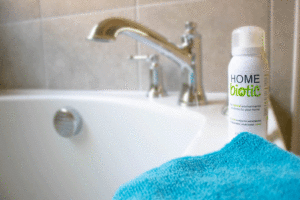

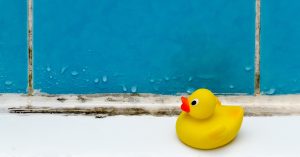
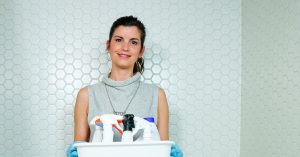 DOWNSIDES OF USING BLEACH
DOWNSIDES OF USING BLEACH IS HYDROGEN PEROXIDE BETTER?
IS HYDROGEN PEROXIDE BETTER?